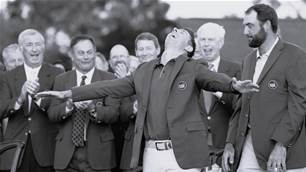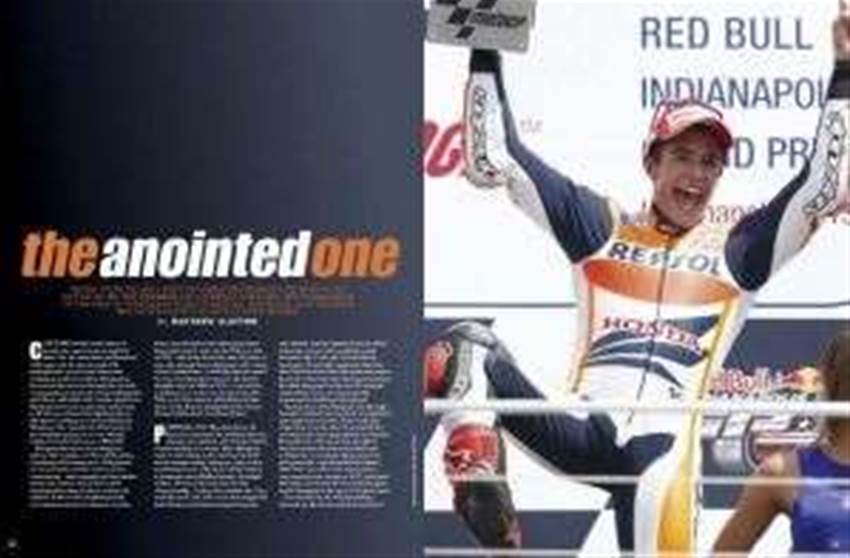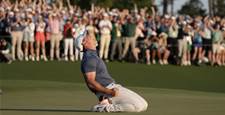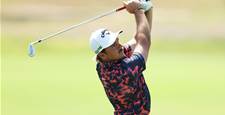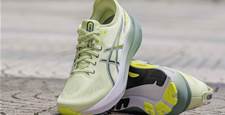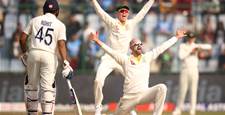Catch our feature story on the new MotoGP world champion in full right here.
Could this really be the future of grand prix motorcycle racing? If it wasn’t for the team shirt emblazoned with logos and the fans poised with smartphones, you’d swear there was nothing special about Marc Marquez as he weaves his scooter through the crowds congregating at the back of the Indianapolis pits. Short and slight with outsize eyebrows, the Spaniard wears a grin that makes him look like an ordinary kid jigging school. But there’s nothing run-of-the-mill about Marquez, who, barely out of his teens, is successfully going toe-to-toe with the battle-scarred hard-arses of MotoGP.
Marquez has never done things by halves. Not crashes, not the way he rides a bucking 240-horsepower, 160kg brute of a motorcycle, not the way he courts controversy – and certainly not his results. In just one season, the 20-year-old is rewriting the rules of what a rookie can achieve in the world’s highest-profile two-wheel motorsport category. A rider hasn’t won the title in his debut year since Kenny Roberts Sr took out the 500cc crown in 1978 – when the American was 26 years of age and already had a glittering road racing career behind him. Could Marquez be next? At time of writing he’d raced to his fourth-straight win; his fifth for 2013 – a record for a debutant in a code over six decades old. Title or not this season, what Marquez has done on the Honda relinquished by Casey Stoner is little short of extraordinary.
***
Portugal, 2010. The Autodromo do Estoril is renowned for weather that can change in an instant, and it turned nasty on this Sunday in October. Marc Marquez, then 17 and riding in the entry-level 125cc world championship category, came to the penultimate race of the year off the back of a dominant win at Phillip Island a fortnight earlier. He was in the box seat for the championship – before the weather bit. On a soaking track, the 125cc race was stopped at half-distance and then resumed once the rain abated, but the Spaniard almost didn’t make the re-start after crashing on the formation lap to the grid. Even with his mechanics frantically repairing what was left of his battered bike, Marquez was sent to the back of the field, his title hopes in tatters. But what happened in the next 20 minutes marked him out as a young man who possessed something truly special.
Starting from 17th, Marquez tore through the field, latched onto the back of compatriot and chief title rival, Nico Terol, and then edged him over the line by one-tenth of a second for the most improbable of victories. His tenth win of the year was enough to see him secure the title at the final race in Valencia, a campaign where he set 12 pole positions, equalling Mick Doohan’s 1997 500cc record for the most poles in one season in any category. At 17 years and 263 days, he became the second-youngest world champion in the sport’s 60-plus years.
As it turned out, he was just getting warmed up. By the time he’d moved into }the intermediate-class Moto2 category and won that title in his second season, Marquez had assembled a CV in the lower classes that resembled that of Valentino Rossi (see The King and I, opposite page). When Stoner announced he was quitting MotoGP midway through the 2012 season, Marquez was snaffled by the Repsol Honda squad as the Australian’s replacement – the sport’s governing body, Dorna, scrapping the “rookie rule” that prevented first-years from competing for a factory MotoGP team.
There was understandably plenty of hype when Marquez announced he was moving to the 1000cc category, but success wasn’t a given. Sure, Stoner had left, but Honda team-mate Dani Pedrosa was coming off a season where he’d won six of the final eight grands prix to miss the title by a whisker. Metronomic Spaniard Jorge Lorenzo was the sport’s kingpin after using his speed and consistency to take the 2012 crown for Yamaha to add to his 2010 success. Combative Briton Cal Crutchlow was coming into his own. And, of course, there was Rossi, the seven-time MotoGP champion who was overjoyed to be back with Yamaha after two dreadful seasons at Ducati. Yes, Marquez was good, but the number he sports on the front of his bike – 93, a nod to the year of his birth – was an ever-present reminder that this was a neophyte playing in the big kids’ sandpit.
Expectations were tempered. Five-time 500cc champion Doohan said, “I see it as being a two-to-three-year progression. There’s been very few guys who’ve come in and just gone ‘bam’, straight on the pace, regardless of what their history is.” But it took all of two weeks for that theory to be blown out of the water. In the first meet of the 2013 season, under floodlights in Qatar, Marquez spent the latter part of the race battling with Rossi, 14 years and one day his senior, and finished third on debut. Better was to come at the inaugural MotoGP race at the Circuit of the Americas in Texas in round two, where Marquez became the youngest premier-class rider to win a grand prix, at 20 years and 63 days old, taking the mantle
of the sport’s youngest top flight winner from American Freddie Spencer, a record that had stood for 31 years. By August, Marquez led the championship standings after his fourth win of the year, had been on the podium in nine of ten races, and left mouths agape at his performances from Losail to Laguna Seca.
Marquez admits he’s been learning on the job this season – not in terms of actually riding a MotoGP motorcycle, but more about the history of the sport he’s doing his utmost to unravel. “Before the start of the year, I didn’t expect to be in the lead of the championship in the middle of the season ... I need to be honest,” he says, his halting English initially trickling out before rapidly increasing in pace as he warms to his point. “Journalists all the time ask me many things about the history, so in the end you know it. Records and all of those things are important, but in the end, the most important is how many world championships you have in the end of your career. Breaking records only feels good because it means you are on the correct way, that something is working well.”
***
Maybe we should’ve seen this coming. Marc Marquez’s junior career, impressive as it is when measured against Valentino Rossi’s lofty benchmark, only told part of the story. The record books detail how many, but they don’t tell how. It was the way Marquez achieved his success that, retrospectively, makes sense of his assault on this year’s MotoGP crown. That Portugal race in 2010 is remarkable for the fact it’s just one of a handful of very special rides which even the very top riders might conjure just once in a career. Marquez has done something similar four times in the last three years, each feat seemingly more impossible than the one preceding it.
In Australia in 2011, his maiden Moto2 season, Marquez again found himself at the back of the grid after practice. He’d gone for one final flying lap after the chequered flag had fallen, only to come across a slowing Ratthapark Wilairot at turn three, drilling the Thai rider at well over 200km/h in a brutal crash that saw Wilairot airlifted to a Melbourne hospital. Marquez was sent to the rear of the 38-rider grid as punishment. Again, he produced a staggering performance. In a category where all bikes are powered by the same 600cc Honda control engine, Marquez was mesmerising, overtaking 22 riders on the first lap alone, climbing into the top ten on lap five and finishing third.
At Motegi in Japan last year, Marquez stalled on the grid and was 32nd into the first corner. Time to grit the teeth and twist the throttle even harder. By the end of lap one, he was ninth. By lap five, a podium was a chance. But that wasn’t enough. Four laps later he was in the lead. He held on to pip compatriot Pol Espargaro by four-tenths of a second. The season finale at Valencia in Spain, his final Moto2 race before graduating to MotoGP, was even better. After winning the title in Australia, Marquez was again demoted to the back of the grid for hitting another rider, punting Italian Simone Corsi into the gravel in practice. On a track slick with drizzle, Marquez’s start looked like something from a video game. He was 11th after one lap, but second looked as good as it could get after race-leader Julian Simon scurried away to a nine-second lead. Marquez, of course, had other ideas. He hunted Simon down, passing him with two laps to go and eventually winning with a second to spare.
Ask Marquez which of the zero-to-hero rides he’s most satisfied with, and his answer is laboured, brow furrowed as if replaying each first lap in his head. “I will say Valencia,” he eventually says. “Because it was the last race, it’s the one I enjoy more. There was no pressure. It was my last race in Moto2, my last race with the team, so I just said, ‘Okay, I am last and I will do my best and try to push, and if I crash, it doesn’t matter.’ I enjoyed that a lot. I prefer the races with the fighting.”
Marquez’s team-mate, Dani Pedrosa, has built a winning career around weekends where he qualifies on pole, then disappears when the lights go out, his only opponents his concentration and the stopwatch. For Marquez, that type of win – much as he’ll take it if it comes, as it did in Germany this year – doesn’t appeal to his sense of adventure. “When you finish a race with a big fight and you won that race ... you feel much better than another victory where you lead all the race. I prefer a big fight to the last corner – and then I win.”
It’s fitting that two of Marc Marquez’s career-defining rides combine brilliance and controversy in equal measure. Veteran motoring journalist Michael Scott referred to the Spaniard as “Marquez the Merciless” during his Moto2 days on account of his speed, ambition, unshakable self-belief and fearlessness. Controversy was always going to follow him to MotoGP – it was just a matter of when it reared its head.
In just the third race of his rookie season at Jerez, Marquez was involved in a clash with Jorge Lorenzo on the final lap, lunging down the inside on the final turn of the race and clattering into the Yamaha rider as they fought over second place. Lorenzo was furious, wagging his finger at Marquez on the podium while shaking his head as the Spanish fans went bananas. After making his thoughts on the incident clear in a tense post-race press conference, Lorenzo headed home to Barcelona – only to find himself seated in the same row of the same flight as Marquez. At the next race in France, Lorenzo could finally crack a smile: “It was funny because the plane has 200 or 300 seats and we were in the same row. We didn’t speak about the incident, we just spoke about unimportant things, and then finally I accepted Marc’s handshake for the first time since the incident. I do not have any problem with him personally; I just want to improve the safety of my sport and that must be the first priority.”
Lorenzo’s comments carry extra weight, given the way he started his own MotoGP career. For a man who now employs a consistently smooth riding style that he calls la mantequilla (the butter), Lorenzo was a wild child in his maiden top-class campaign in 2008. A junior champ like Marquez, Lorenzo arrived with a similar bang, finishing on the podium in his first MotoGP race and winning his third before a spate of crashes – seven in seven race weekends – saw him dial back his aggression.
After Marquez won his maiden race in Texas, Lorenzo reminisced about being young and fearless on the fastest motorcycles in the world. “When you get a little bit older, you start to become more conscious about all the risk. You have more experience, so you calculate the risk more. When you are 20 years old and a rookie in MotoGP, you see things in a different way. You have a lot of anger to demonstrate and you are not afraid to crash.”
Marquez has already proven his toughness, bouncing back from eye-watering shunts that would unsettle most riders, let alone rookies. In the fifth race of 2013 in Italy, the Spaniard had the fastest recorded crash in the sport’s history when he came off at – no misprint – 337km/h at the end of the uphill straight at Mugello in practice. With the wobbling bike out of control and perilously close to the trackside wall, Marquez made the split-second decision to abandon it }before it side-swiped the concrete barrier.
While the wreckage of his Honda was swept into a dustpan, Marquez came away in one piece. “I tried to save it, but the bike was pulling me towards the wall, so I jumped from the bike to avoid hitting it” was his explanation. “I hit my chin hard and strained my neck quite badly; I also have some contusions to my right shoulder, arm and leg. Other than that, I’m okay.”
Yamaha rider Cal Crutchlow believes it’s the Spaniard’s intelligence as much as his toughness that marks him as special. “Marquez is the best rider in the world at the moment. He’s just clever – look at Mugello. He’s just like a cat that always lands on its feet. You only see a rider like Marc Marquez come along every 15 years ... and the one before that was Valentino.”
***
While the merits of Marc Marquez’s uber-aggressive approach can be debated, what isn’t in question is the sheer audacity of his riding, which features a cornering style that defies gravity, logic and belief. While other riders lean their bike into the corners, carrying as much speed as possible while dancing on the edge of the tyre, Marquez has a more extreme approach, sitting almost off the bike and creating a lean angle of around 65 degrees, his forearm and backside hovering millimetres from the tarmac. Even after standing for half an hour at turn one at Indianapolis, where the bikes sweep left after topping 335km/h on the start-finish straight, understanding how Marquez stays upright is close to impossible. Writing in Motor Sport magazine, revered motorcycle journalist Mat Oxley believes Marquez’s style could yet change the way riders approach their sport. “The [bike] is shaking and wobbling, bucking and weaving because he’s asking more from the machine than it’s prepared to give ... We are often told that the only way to ride a Bridgestone-equipped and electronically massaged MotoGP bike is nice and smooth; Marquez has already torn that theory to shreds.”
The man himself believes his signature style evolved as he made his way through the lower world championship classes. “Step by step, I start to believe more in myself on the bike and become a little bit more aggressive,” he says. “On the MotoGP bike, in the beginning, I try to push 100 per cent, but I was not under control of everything. Now, I feel more free and I start to play on the bike, so that’s when you enjoy it. This style that I use now, for my physical condition, it’s a little bit more difficult because you need to move more and you get more tired. I tried to change to be more normal, but I can’t. I was not able.”
Like Oxley, Valentino Rossi is impressed by what he sees. It took just a few laps of pre-season testing in Malaysia riding behind the newcomer to convince Rossi that the Spaniard was the real thing. “I enjoy a lot because his riding style is very spectacular,” Rossi said. “Fuck, he rides very hard. The bike moves and he slides, and he always touches his elbow on the tarmac. He is particular because he has a strange riding style, maybe something new. Jorge and I ride in a more classic style, but Marquez is something different.”
***
Something different, on the strength of what we’ve seen so far, doesn’t even begin to describe Marc Marquez’s impact on the sport. The first chance for most Australian fans to see him up-close on the 1000cc MotoGP monsters will come at Phillip Island on October 20. Last year’s Australian GP – Stoner signing off with a sixth-straight Island win, local riders on all three world championship category podiums and a 53,000-strong crowd wallowing in unlikely October sunshine – will take some beating. But Marquez has the ability – and the pedigree in Australia – to breathe new life into this year’s event.
In 2010, he won the 125cc race at a canter, his only mistake coming on the lap back to the pits when he was so intent watching himself on the big screens surrounding the track that he ran onto the soggy grass, ensuring he stepped onto the podium with muddied leathers and a red face. His 2011 charge from 38th to third was scarcely believable, while a third last year saw Marquez wrap up the Moto2 title, the last box he wanted to tick before moving up to battle the big boys.
While he may have taken over Stoner’s seat, it’s the Australian who Marquez will be studying astutely before he turns his first laps in October. “I watched Casey last year, because he’s the rider that I saw there that is the fastest, and I said, ‘I’m not able to do that like him.’ He’s been so fast there, but I will learn. Before I go there, I will try to watch many videos of him.” Any lessons learned from those studies will undoubtedly be – like everything else Marquez has already achieved in his fledgling MotoGP career – worth watching.
Related Articles
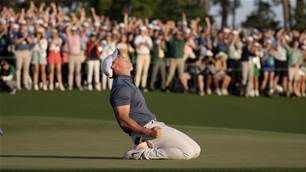
Feature Story: Moving the Needle
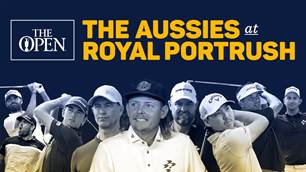
The Aussies at The Open
